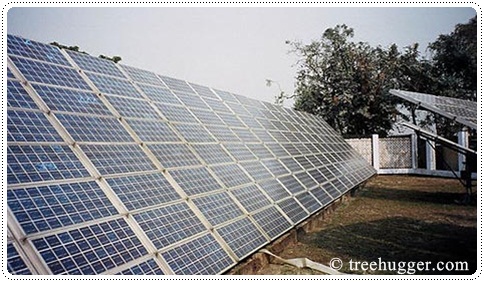
| ||||
|
Environmental Issues in India
"Introduction to Environmental Problems in India"
All information below is subject to change
In this article you'll find:
This article is aimed at environmental problems in India and it's meant as an introduction. As always, there's a strong correlation between the environment and socioeconomic factors, and also between environment and industrialization. Hope you find it useful! :-) Air Pollution in India

It is a fact that India has the worst air pollution in the world. If you've been traveling in India, you know what I mean. So, what causes this harsh air pollution? Burning of fossil fuels like coal and diesel has contributed to the air pollution in the country. Other factors are construction (paving roads), landfill open burning, diesel vehicles and power plants. Power plants stands for 20,3% of the air pollution in Mumbai. Indoor pollution in India (indoor smoke from household fuel) is overall 25% in India and is concentrated among the rural poor. Locals burn wood and coal as fuel, and this has claimed over 500,000 lives - most of them are women and children (which is not a surprise).
 Environmental issues in India: Indoor air pollution in India Environmental issues in India: Indoor air pollution in India
Air Pollution news in India:
Water Issues in India
When I say water issues in India, you're probably thinking about the Ganga River. Well, that's only one piece of the truth. So how is the water situation in India? The problem is poor water quality, especially in rural areas. Good water quality is essential to avoid water-borne diseases. Access to adequate water has been referred to as a major factor to limiting development. The average availability of water in India is reducing along with the growing Indian population. Note that between 1950 and 2011 India's population has increased from 372 millions to 1,21 billion (UN Data). That means the population has tripled in matter of 60 years! Study shows that India will become a water-stressed nation before 2020. What causes poor water quality? It's mainly caused by pollution and over-exploitation. Pollution includes discharge from industries and sewage discharge. Poor water quality is also caused by floods, which affect India several months a year. If you combine this with lack of knowledge on hygiene, sanitation, collection and storage of water, the fatalities will continue. According to Human Development Report 2011, the deprivations in sanitation among multidimensionally poor people range from 3,5 percent in Kerala to more than 70 percent in Bihar. That's shocking statistics!
Climate Change in IndiaClimate change is a global problem, and it also affects the environment in India. Rapid industrialization/modernization, rapid population growth, urbanization and growing consumption are the major factors contributing to deforestation in the country. As a consequence of the Kyoto Protocol, developed countries (which are Parties to the Protocol) are committed to reduce emissions. Developing countries like India are not committed on the same level as developed countries. Still, in 2010 India announced voluntary targeted reductions of 20-25% in carbon intensity (average emission rate).

About 45% of India's land is degraded, mainly because of deforestation and erosion. Now, India is one of the developing countries which have transitioned from deforesting to reforesting with support from domestic and international programs. The plan here is to expand the forest from the current 23% to 33% by planting trees. Deforestation news in India:
Return to top of Environmental Issues in India Locals and the EnvironmentHow are locals contributing to a better environment? As part of my field work in Kerala in 2011, I asked the guesthouses and hotels I visited about what they did to be environmental friendly. It's easy to promote sustainable tourism, but to in fact implement changes into your business is another story. I interviewed 17 homestays and 9 hotels. PS: I'm not mentioning any names of hotels or guesthouses since they're promised anonymity. Some important points from the field work:
Over to some other examples which are not related to my field work: In India, an NGO partnered up with a university to develop locally manufactured filters that remove arsenic from the water in West-Bengal. In Himachal Pradesh, the number of people in rural areas who had toilets rose from 2.4 million in 2006 to 5.6 million in 2010 out of a total population of 6 million. They managed to do this by implementing CLTS (Community-Led Total Sanitation). So there seems to be some actions for the environmental part. The way I see it, progress will continue to require action (and not talk) from the government side, a close co-operation between the local communities and the government, subsidies/financial support, implement strict policies for industries regarding waste/sewage disposal and maybe we'll see a better environmental future for India.
Sources:
Return to top of Environmental Issues in India
Backpacking Tips Home
Facts about India
Environmental Issues in India
|
Search this site
Train Travel in India



Learn HindiTraveling in India? Learn useful Hindi phrases for free!
|
|||
|
Connect with
| ||||
|
|
||||


 Learn Hindi
Learn Hindi

